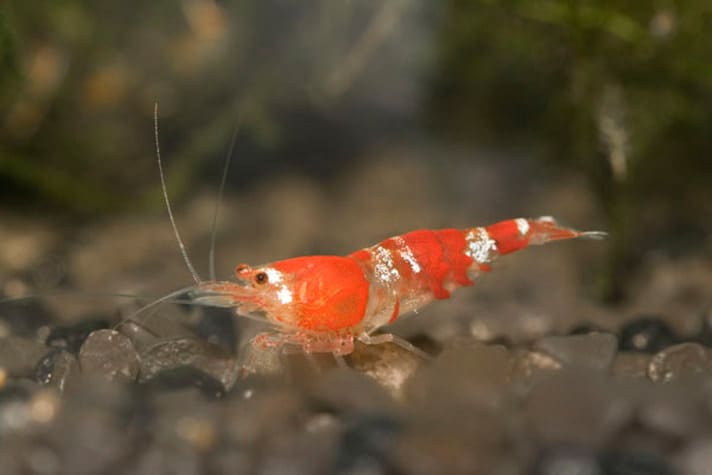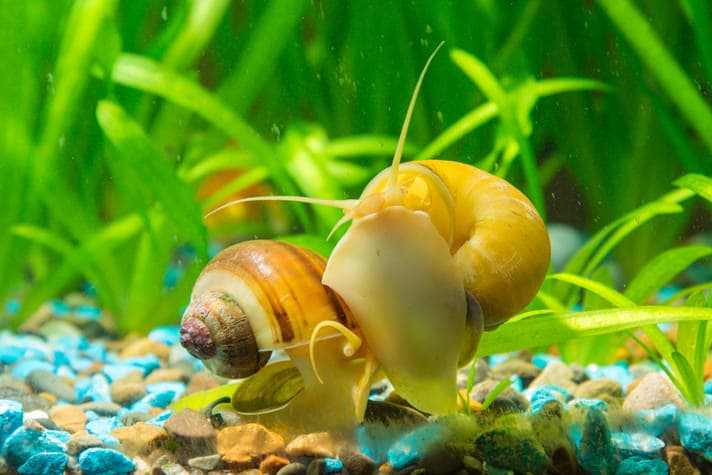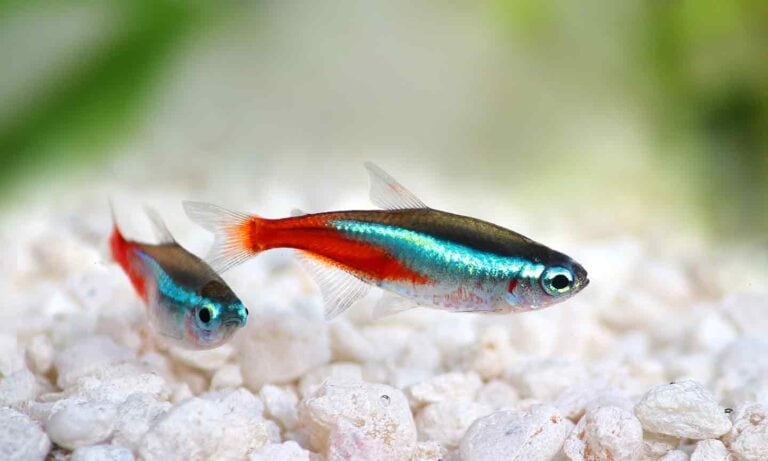Q.
A friend of mine put some ghost shrimp in a tank of big fish. It was horrible to watch them run for their lives. I asked if he could spare two for me, and he did. Now I don’t know how to take care of them. I cannot find out anything about them, only that they are fed to other fish. What kind of plants do they hide in? Where do they lay their eggs? They are also hard to see. What color of gravel is best? Can you help me?
Barbara Loeb
Reading, Pennsylvania
A.
Ghost shrimp (Palaemonetes paludosus) are interesting little creatures. These highly transparent shrimp are also called glass shrimp and grass shrimp. You can see right through ghost shrimp, and I always find it amusing to watch them swimming around after a heavy feeding. Their stomachs turn the color of the flakes or other fish food that they consumed, so the result is a bunch of color spots and black, beady eyes swimming around the aquarium.
But ghost shrimp are not suitable for every fish aquarium. They are small, growing to only around 1.5 inches in length. Their small size and delicate nature make them easy targets. Many fish would happily munch on legs or antennae—or (if the fish is large enough) even swallow the shrimp whole. It should be no surprise that dealers sell more ghost shrimp as feeders for large fish than they sell as pets. It’s nothing to feel bad about because that’s how nature works — all animals eat some other living thing to survive.
Still, if you keep small fish and have a heavily planted aquarium to provide cover, ghost shrimp can mix into your community. Pick small, unaggressive fish for tankmates. Fine-leaved plants, such as hornwort, cabomba and milfoil are good choices. I think the shrimp look best when kept in tanks with dark gravel—especially black gravel. The dark background causes various tiny specks and markings on the shrimp to darken and become apparent. It makes them a bit less transparent, but I think it adds to the interest.
Feeding a ghost shrimp is no hardship. They are active scavengers and accept all foods, even flakes. The shrimp even munch on brush algae, a type of algae left untouched by most algae-eating fish. Ghost shrimp are not strictly bottom feeders, either. They readily climb plants and fish tank decorations looking for food—and they are such good swimmers that they take advantage of floating foods, too.
Ghost shrimp spawn readily—and often — in the aquarium. It’s common to see females carrying masses of 20 to 30 pinhead-sized, green eggs between the swimmerets underneath their tails. The swimmerets paddle to bring oxygen to the eggs, which hatch in about three weeks. At that time, the female will use her swimmerets to disperse the baby shrimp into the water column. But you should not expect to be successful raising the babies. Young ghost shrimp go through a larval form. They are very tiny and free-swimming. They don’t even have legs yet — they have swimmerets (padlike appendages on the underside of the tail) that help them swim. The larvae live in the water column, eating infusoria and microscopic plankton for a few days, before molting and settling down as miniature shrimp. Because of this, any ghost shrimp youngsters not eaten by fish will starve in aquariums — which are much too clean to provide sufficient food. Power filters can also be murder, literally, to young ghost shrimp.
If you want to try breeding ghost shrimp successfully, set up a heavily planted maternity tank and remove the female after she releases young. Use only an air-operated sponge filter for circulation. Lightly feed bits of strained egg yolk, finely powdered “egglayer” fry food, infusoria, rotifers and microworms until the fry settle. Then hope for the best!
Posted by: Chewy Editorial
Share:









